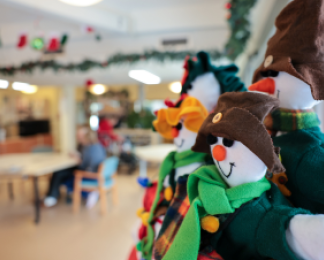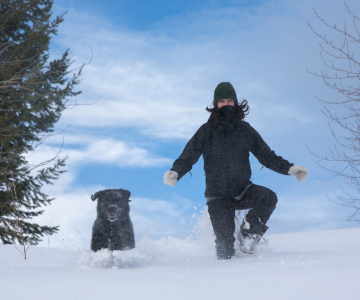Overview of radon gas
Radon is an invisible, odourless, radioactive gas released from the natural breakdown of uranium found in soils and rocks, which is common within our region.
Learn more about radon gas, its health hazards and how to lower your exposure in your home and other buildings

Radon is an invisible, odourless, radioactive gas released from the natural breakdown of uranium found in soils and rocks, which is common within our region.
Radon gas causes lung cancer. The risk of cancer depends on the levels of radon and amount of contact with radon and tobacco smoke over a lifetime. According to Health Canada, “There is no [radon] level that is considered risk free.”
Although radon is natural, it can build up inside buildings and become harmful to human health. According to Health Canada, radon is the number one cause of lung cancer in non-smokers.
Radiation released from radon gas particles can damage DNA which can lead to lung cancer. In general, the higher the radon level and the more time a person is exposed to radon the more damage to lung tissue that occurs. This results in a greater chance of developing the disease. In addition, if a person smokes, or is exposed to environmental tobacco smoke and radon, the risk of lung cancer is much higher.
Radon takes the easiest path into our homes and indoor places. Radon can enter a building through small or large openings in the foundation. The amount of radon entering can be affected by the heating and ventilation system. During the cooler months, windows and doors are often closed and rising warm air in a home draws more radon from the ground.
Radon will be present in all indoor spaces such as homes, places of work, schools, daycares and public buildings. Indoor areas in contact with or below the ground are more likely to contain higher levels. While any amount of radon puts our health at risk, the longer the contact the greater the risk.
The only way to know the radon levels in your home or other buildings is to test for radon. Just because your neighbours may have low radon levels does not mean the levels in your home are low, too. How each house is constructed can make a big difference and will impact if you have radon in your home.
A radon detection puck like the one pictured below can be placed in your home or building to measure radon levels:

Testing is the only way to know the level of radon in your home or building, so be sure to order a radon test kit. Ideally, testing should occur during winter months
There are two types of radon tests: long term and short term. We recommend using long-term tests, as they provide the most accurate picture of what you are breathing. Long-term tests are those in which the radon detector is in place for a minimum three months (91 days). You can get a long-term radon test kit through the links below:
You should re-test after you:
See the Resources section below for information on testing homes, schools and large buildings.
Use your long-term radon test result from your home and/or buildings and check out this table of radon levels in the home to understand your risk of lung cancer from radon. The table highlights the risk of lung cancer per 1,000 people when exposed to different levels of radon gas based on a lifetime (70 years) of exposure.
Note: Health Canada recommends lowering radon levels to as low as reasonably achievable.
Follow the actions listed below to lower radon levels in your home or building. Remember to complete another long-term radon test to know if your fix worked.
Active soil depressurization is the best and most permanent method for reducing radon because it provides an alternate path for the radon gas to travel rather than into the building. The cost can range between $350 and $3,000, depending upon site-specifics.
To take immediate action on radon while you are waiting for construction repairs to be completed:
To lower the radon levels in a home or building for the long term, arrange for a radon professional or do one or more of the following:
Learn more about radon
Radon and lung health
Measuring, reducing and mitigating radon
Resources for local governments and schools
Radon advocacy and organizations
Radon research
BC Lung and Interior Health are holding a radon skill testing contest, open to any students in Interior Health, from grades 4 to 12.
Students in the Interior Health region can answer one or more skill testing questions for a chance to win some exciting prizes.
The contest is now closed.


Those with dementia need special consideration during the holidays. Read our tips and advice to make the holidays enjoyable for everyone.
/stories/supporting-loved-one-dementia-during-holidays


Loreen’s ability to keep calm under pressure, paired with her caring nature, have been integral to her success and to the quality of care that she provides.
/stories/we-are-ih-experienced-nurse-always-steps-when-needed


Many people like to do the Dry January challenge, but going dry isn't for everyone. Gain tips on reducing your alcohol consumption in the New Year and beyond..
/stories/thinking-going-dry-january-going-damp-great-option-too


As we come to the close of 2024 we pause to reflect on the year and celebrate our achievements. Watch our short video of this year’s highlights across IH.
/stories/looking-back-and-celebrating-2024


All's well that ends well: For Kelowna health unit aide JQ, this simple phrase is more than advice—it’s a way of life.
/stories/we-are-ih-health-unit-aide-brings-positivity-every-day


The winter and holiday season can bring joy, but can also bring stresses and challenges. Explore these 10 tips for supporting for mental and physical health.
/stories/10-healthy-habits-winter-and-holiday-season
Receive news and alert posts, and Stories@IH blog posts, right to your inbox!
